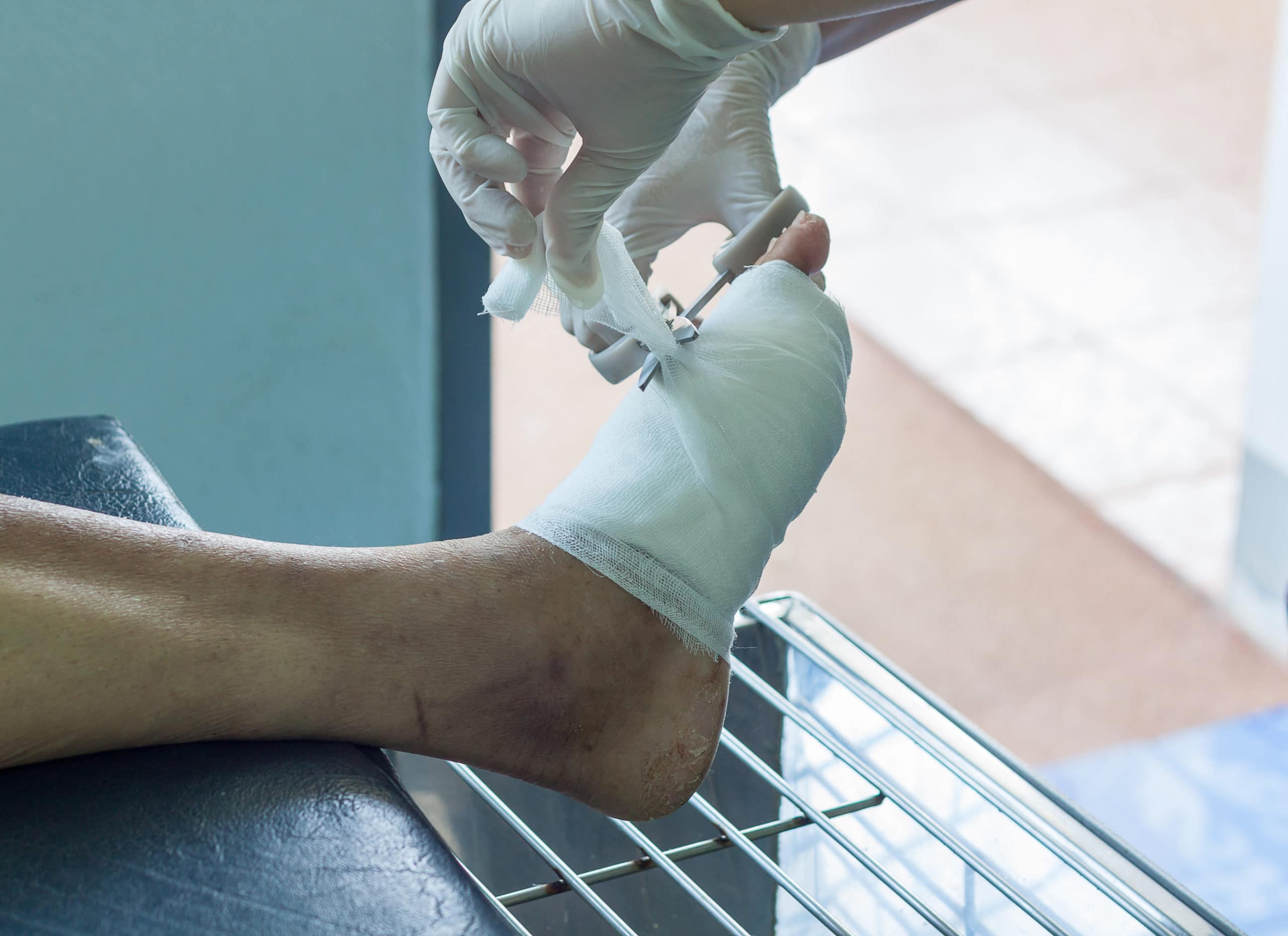Diabetic Foot Care
If you have diabetes mellitus, your feet are at risk.
We aren’t just talking about aches and pains, either. We’re talking serious medical complications that could cost you your foot, a part of your leg—maybe even your life.
The statistics are dire. About 25% of the diabetic population will develop foot ulceration during the life of the disease. Of those, 20% will require an amputation to stop a progressing infection.
Fortunately, the worst of these complications can almost always be prevented with a comprehensive diabetic foot care plan—and help from your medical team, including your podiatrist.
A Guide To Recognizing Diabetic Foot Problems
Your feet are your foundation, and the health of them helps dictate how much of an active happy life you can lead. Issues surround your diabetic feet can cause a real burden. Download our free book to further recognize when you may have an issue.
Why Diabetes Is So Dangerous for Feet?
Diabetes is linked with two major complications that, in combination, can have devastating consequences for foot health: nerve damage (neuropathy) and poor circulation.
- Neuropathy leads to gradual, and eventually total, loss of feeling in your feet. In addition to making it more difficult to walk and keep your balance, it also leaves you unable to feel pain or detect damage from cuts, blisters, or other injuries you might sustain.
- Poor circulation makes it much more difficult for your body to close wounds and fight off infections.
As you can see, this is a very dangerous combination. For example, if you aren’t checking your feet regularly, you might not notice a cut or popped blister for hours or even days after it occurs, since you can’t feel your feet in the first place. And if your circulation is poor, even small injuries like this can progress into dangerous infections if allowed to fester.
Some of the more common and/or dangerous complications of diabetes that affect the feet—apart from neuropathy and poor circulation—include:
- Foot ulcers. Diabetic ulcers often form in weight bearing areas, such as the balls of the feet or the bottom of the toe. However, ill-fitting shoes could lead to wounds in other spots, such as the sides of feet.
- Charcot foot. If your diabetes is severe, bones in the feet may become more brittle and prone to cracking and breaking—and if your neuropathy is severe, even this may not cause noticeable pain. Continuing to walk on your damaged feet compounds the problem, causing your feet to change shape and become significantly deformed.
- Skin and nail problems. People with diabetes often struggle with skin that becomes very dry and prone to cracking, fissuring, or developing corns and calluses. Nails also tend to become thicker and grow more slowly, increasing the risk of ingrown toenails or fungal nail infections. Although these might be considered annoyances in healthy individuals, they are more dangerous for those with diabetes due to the increased risk of infection.
Building a Diabetic Foot Care Plan
As we noted, the vast majority of the most serious diabetic foot complications—particularly those that could lead to Charcot foot and/or amputations—can be avoided by building a diabetic foot care plan and following it faithfully.
Here are a few simple steps you should begin to follow every day:
- Check your feet at least once per day. You can’t rely on pain to tell you about a problem, so you’ll have to examine your feet yourself. Look for any cuts, open wounds, blisters, or other visual problems. Feel your feet as well for any odd temperature changes. If you are unable to look at the bottom of your foot, use a mirror.
- If you identify a foot ulcer, or any other foot problem, contact your podiatrist IMMEDIATELY for treatment.
- Do not walk barefoot, even indoors. This exposes your foot to the risk of colliding with or stepping on an object that could damage it.
- Check your shoes before you put them on. A stowaway pebble or piece of debris could unknowingly cause injury.
- Use a moisturizing cream. Apply twice daily to keep your skin soft and prevent fissures that can lead to infection. Just remember to not apply moisturizer between the toes.
In addition to these daily tasks, you should also schedule a comprehensive diabetic foot care exam with your podiatrist at least once per year, or according to a schedule recommended by your podiatrist.
Our Diabetic Foot Care Services
A yearly comprehensive diabetic foot care examination from Waco Foot & Ankle is the best way to help you protect your feet, prevent severe complications, and continue to live an active and healthy lifestyle.
We will evaluate your feet to identify any existing problems, as well as determine your future risk level. From there we can establish the proper treatments and/or preventative care that you need, and make sure you are fully educated about how to care for your feet.
Other services we provide include:
- Diabetic shoes. These simple shoes are one of the most effective ways to prevent diabetic ulcers and other complications, and we are proud to be one of the few offices in the Waco area offering them. Do not trust the local shoe store to know what shoe is best for you! Diabetic shoes these days come in very fashionable styles for both men and women, and they’re usually covered by insurance.
- Advanced wound care. We are, quite simply, the best in the area when it comes to healing foot wounds as quickly as possible. Our team uses advanced procedures, such as amniotic tissue grafts, to protect the wound from infection, accelerate healing, and reduce the formation of scar tissue.
All people with diabetes should get a podiatric checkup at least once per year, and should schedule an appointment immediately if any ulcers or other problems develop. You can contact the diabetic foot care experts at Waco Foot & Ankle online, or by calling (254) 776-6995.



